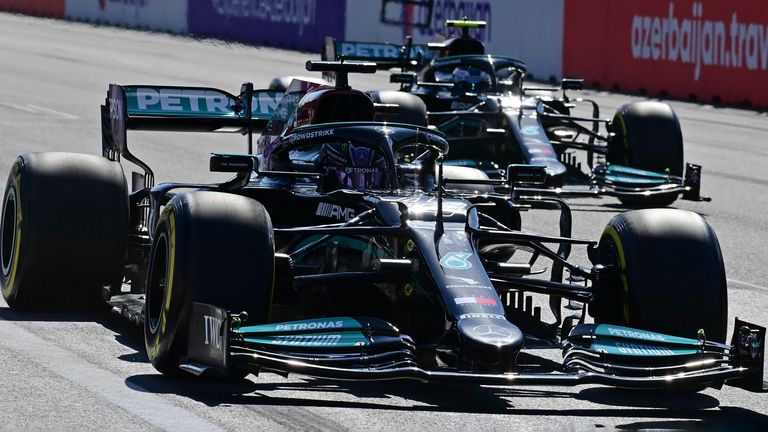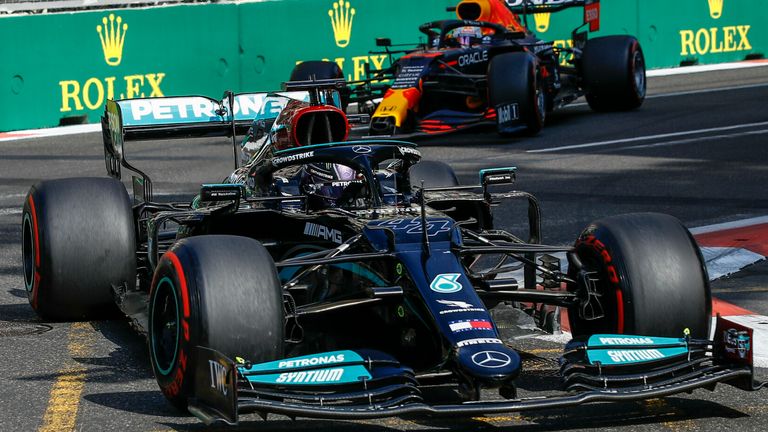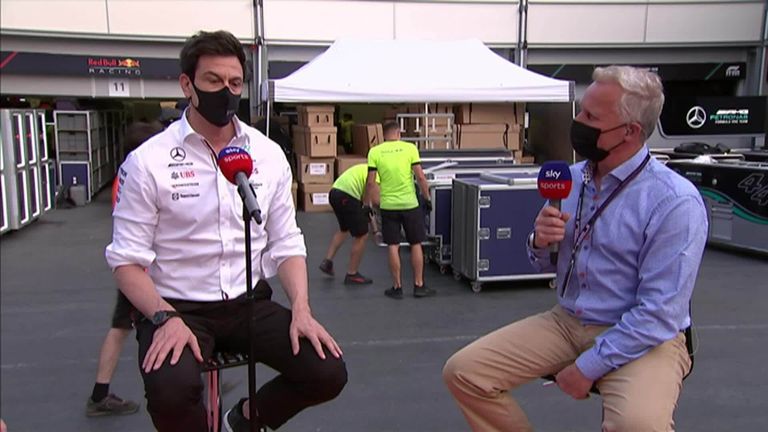French GP: Mark Hughes assesses Mercedes' chance of a fightback against Red Bull at Paul Ricard
Seven points in Monaco. No points in Baku. But will normal service resume for Mercedes as F1 2021 returns to a more traditional track this weekend in the scorching south of France?
Thursday 17 June 2021 07:54, UK
Back on a more conventional race track after the street circuit challenges of Monaco and Baku, Mercedes comes to Paul Ricard with realistic hope that its recent downturn in competitiveness was track-specific and related purely to the W12's reluctance to generate adequate front tyre temperature.
"In Monaco and Baku we put the W12 in a window where only one of our drivers found the confidence to unlock the performance of the car - Valtteri in Monaco and Lewis in Baku," says Mercedes in its own race preview. "In such a close, intense title fight, we need to deliver a car at each race which both our drivers can confidently push to its limits."
The street circuits, both in their lower grip surfaces and the generally low-speed, short duration of their corners don't put the same sorts of loads into the tyres as more conventional tracks such as Ricard.
So that particular Mercedes warm-up disadvantage to Red Bull might be expected to evaporate here.
Looking back to the most recent conventional track, at Barcelona, there the tyre challenge was about keeping the rear temperatures under control during the race.
This would define your pace and it was a challenge which very much favoured Mercedes over Red Bull, allowing Lewis Hamilton to make a second stop when stuck behind Max Verstappen and be able to make up the 21s time loss of the pit stop and then pass on track.
- Sky Sports F1's French GP live TV schedule
- Pirelli identify cause of Baku tyre blowouts
- F1 championship standings
That was purely about how much more energy the Red Bull takes from its rear tyres, taking their core over the optimum temperature, resulting in ever-lower levels of grip.
The Circuit Paul Ricard has plenty of demanding, long-duration corners to impose heavy loads on the rear tyres and unless Red Bull has made a breakthrough in better controlling them, it could very well be a similar story to Barcelona here. Particularly as the track tends to run very hot (of all the tracks on this year's calendar it has historically the highest average track temperature, at 50-deg C).
Track temperature is not a first order factor in determining the tyre temperatures, but it plays a part.
So is it likely to be Mercedes all the way? The team will still face its challenges but how serious they prove to be will likely depend upon what, if any, steps Red Bull has been able to make in better controlling their thermal tyre degradation.
The big spread of corner speeds is not best-suited to the generally narrower set up window of a low-rake car such as the Mercedes. The high-rake Red Bull will tend to better combat the natural understeer of F1 cars at low speeds, as its aerodynamic centre of pressure moves further forward under braking.
Low speed response and high-speed entry stability are the two conflicting demands of set-up and the window lies between those book ends. The bigger range of corner speeds, the more that window narrows for the low-rake car relative to the high-rake, largely because of that helpful high-rake aero trait into slow corners.
Mercedes engineers will be working hard to tease out a set-up which will give the best average over the lap and even if the Red Bull can be better balanced on more of the corners, the Merc's lower drag might be expected to offset some or all of that disadvantage in terms of a qualifying lap time.
The crucial challenge though will be running a sequence of laps.
As such, the long run simulations of Friday will give us our first reading of whether Red Bull has been able to respond to the problems which Barcelona made apparent. The destiny of the world title could depend on it.






